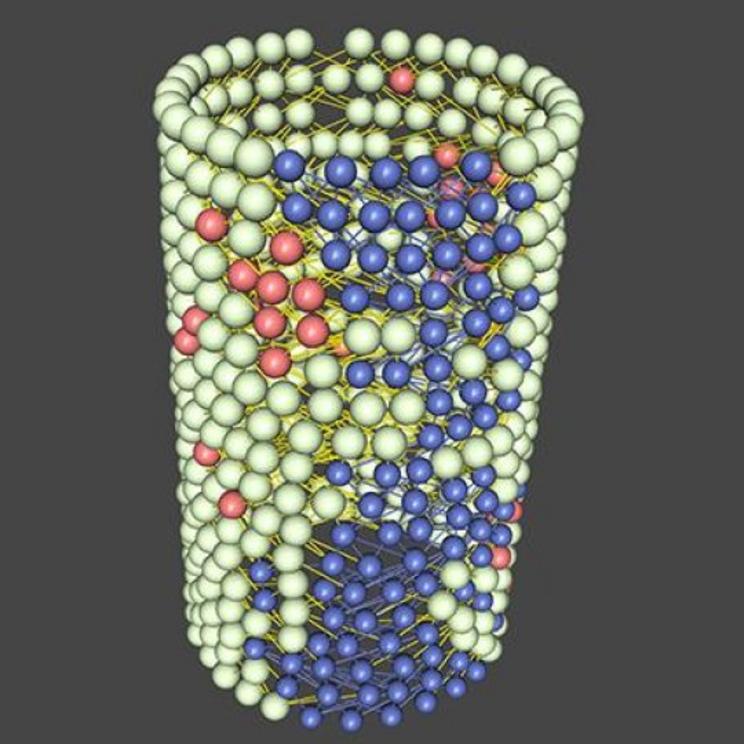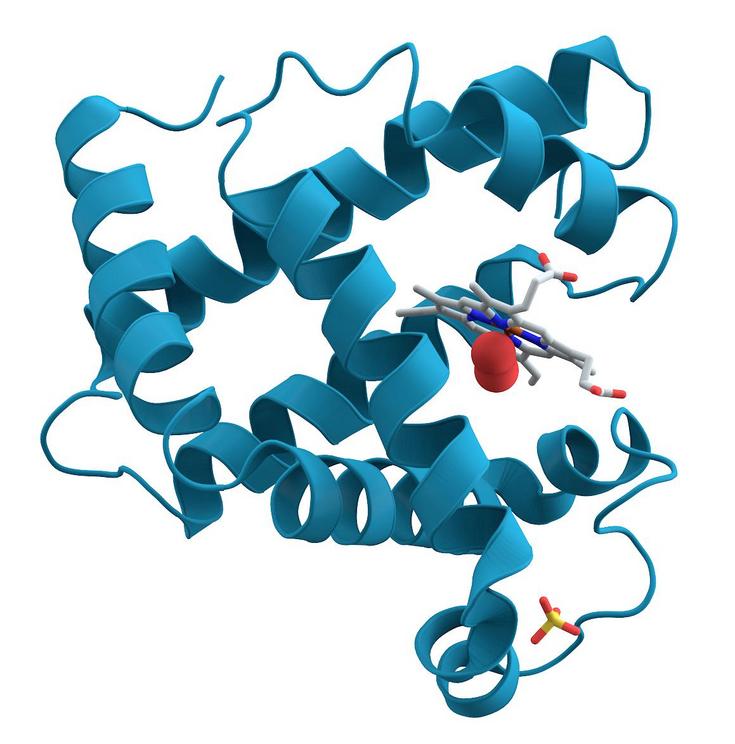A fresh look inside the protein nano-machines
Proteins perform vital functions of life, they digest food and fight infections and cancer. They are in fact nano-machines, each one of them designed to perform a specific task. But how did they evolve to match those needs, how did the genes encode the structure and function of proteins? Researchers from the University of Geneva (UNIGE), Switzerland, the Institute for Basic Science, Korea, and the Rockefeller University, United States, have conducted a study that tackles this yet unanswered question, and explains the basic geometry of the gene-to-protein code, by connecting proteins to properties of amorphous physical matter. The full article appears in Physical Review X.
 The essential nano-mechanic features of proteins can be conveniently studied by a simplified geometry. Taking, for example, a cylinder, and asking for «evolution» to find a fluid channel (shown in blue) a multitude of realistic properties of real proteins
The essential nano-mechanic features of proteins can be conveniently studied by a simplified geometry. Taking, for example, a cylinder, and asking for «evolution» to find a fluid channel (shown in blue) a multitude of realistic properties of real proteins
A protein is a chain made of twenty different kinds of amino acids with elaborate interactions, and, unlike standard physical matter, it is selected by evolution. "The blueprint for protein synthesis is written in long DNA genes, but we show that only a small fraction of this huge information space is used to make the functional protein," explains Jean-Pierre Eckmann, Professor at the Department of Theoretical Physics from the Faculty of Science of UNIGE.
Together with Prof. Tsvi Tlusty from the Center for Soft and Living Matter, Institute for Basic Science (IBS) in Korea and Prof. Albert Libchaber from the Rockefeller University in New York, Prof. Eckmann shows that the only changes in the code that matter are those occurring in the segment of the gene coding the mechanically relevant hinges of the nano-machine. The changes in other regions of this highly redundant code have no impact. "We are now using this new approach to understand the relation between the function and dynamics of several important proteins."
Story Source:
Materials provided by Université de Genève.

